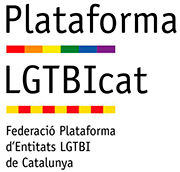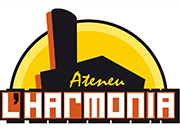(? - living) U.S.A.

Creator of the Rainbow flag
In 1978, Gilbert Baker of San Francisco designed the flag that is now recognized by the International Congress of Flag Makers and has become the most visible symbol of gay pride. No pride parade would be complete without the inclusion of a giant rainbow flag or 'Pride Flag' - usually being carried by dozens, if not hundreds, of proud GLBT folk.
The San Francisco artist who originally designed the rainbow flag a quarter of a century ago wanted it to be a symbol of pride in a time of rampant anti-gay sentiment. Baker was called upon by a local activist in 1978 to create a flag that would be symbolic of the growing gay pride movement. Baker turned to the "Flag of the Race," which had five stripes, for inspiration, and decided to make an eight-striped flag. The eight colours in its original form are: pink, red, orange, yellow, green, turquoise, indigo, and violet.
Each colour was meant to represent something about the gay community. For instance, green was often associated with homosexuality in Victorian England. In the post-Stonewall late 1960s, 'Purple Power' was a phrase often associated with the gay rights movement. The colour pink is a direct descendant of the pink triangles used to identify homosexual men in Nazi Germany. All of the colours woven into the flag are also meant to represent the diversity of the gay community.
Baker himself also tagged each colour with a spiritual meaning (see below). Baker dyed the material himself and sewed it together into the horizontally-striped flag used today. When he took it to the Paramount Flag Company to have it manufactured commercially, however, he found that the company couldn't print hot pink, and so the flag became seven-striped.
In 1979, the flag lost another stripe in honour of the loss of San Francisco openly gay city supervisor Harvey Milk. The 1979 San Francisco Pride Parade Committee wanted to use Baker's flag in the parade, but they decided to ditch the indigo stripe so that the flag could be divided evenly on each side of the street along the parade route. The six colour version of the flag soon became most popular and is the one now recognized by the International Congress of Flag Makers.

The Freedom Flag
- First waved: In May 1978 in San Francisco, California, USA.
- Why? At San Francisco's annual Freedom Day Parade. Now used the world over as a symbol of the diversity and unity of the lesbian and gay community.
- Where is it now? Hanging from the roof of San Francisco's gay centre.
- Designed by: Gilbert Baker, a San Franciscan local activist and designer.
- Inspired by: The five-colour Flag of Race
- Size: 62 by 48 feet.
- Made from: Organic cotton.
- How it was dyed: By hand, in trash cans (refuse bins).
- How it was rinsed: With water drained from San Francisco's fire hydrants.
- Original colours: Eight stripes: pink, red, orange, yellow, green, turquoise, indigo, and violet.
- Colours of common replicas: Six stripes: red, orange, yellow, green, blue, and violet.


Traditional symbolism of the colours:
- Pink for sexuality
- Red for life
- Orange for healing
- Yellow for sun
- Green for nature
- Blue for art
- Indigo for harmony
- Violet for spirit




